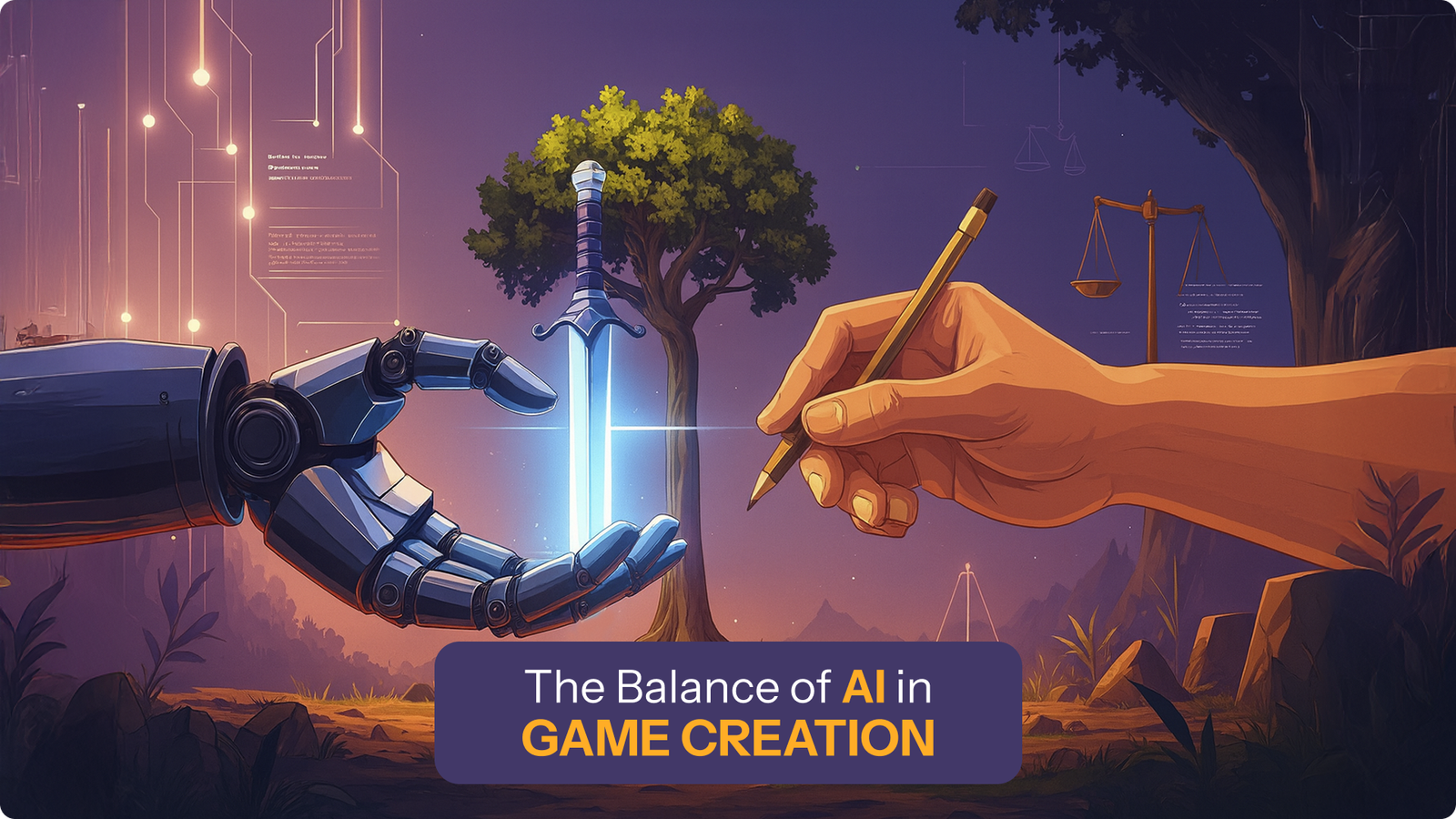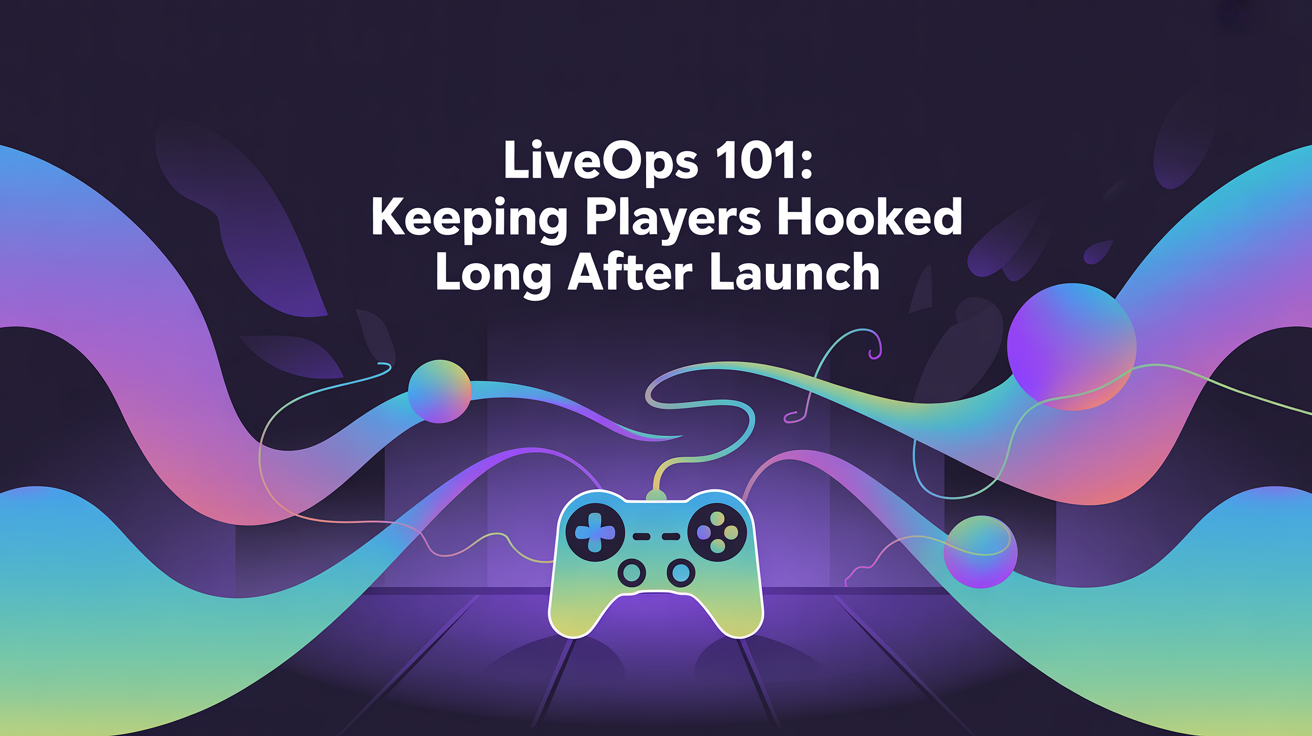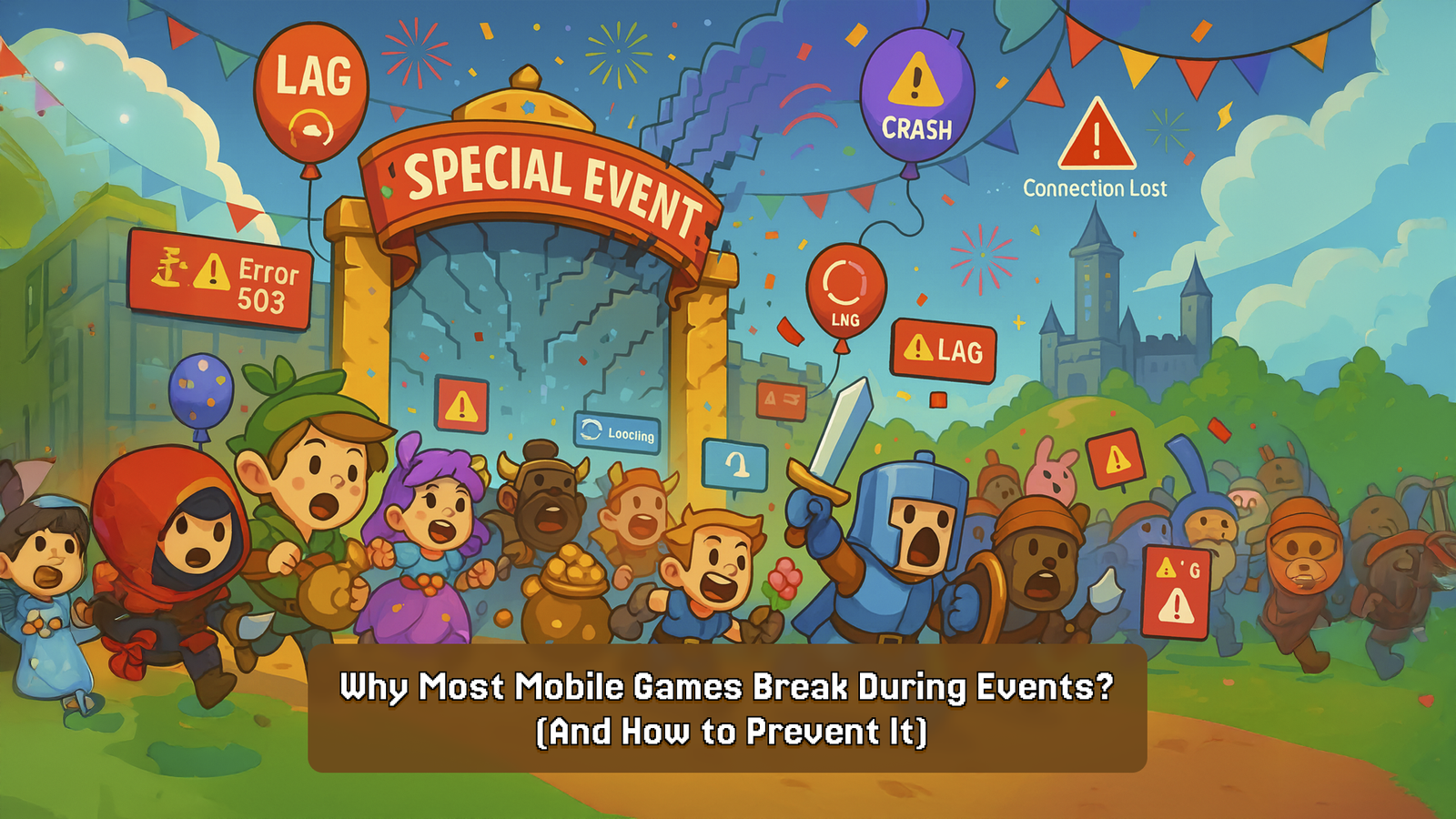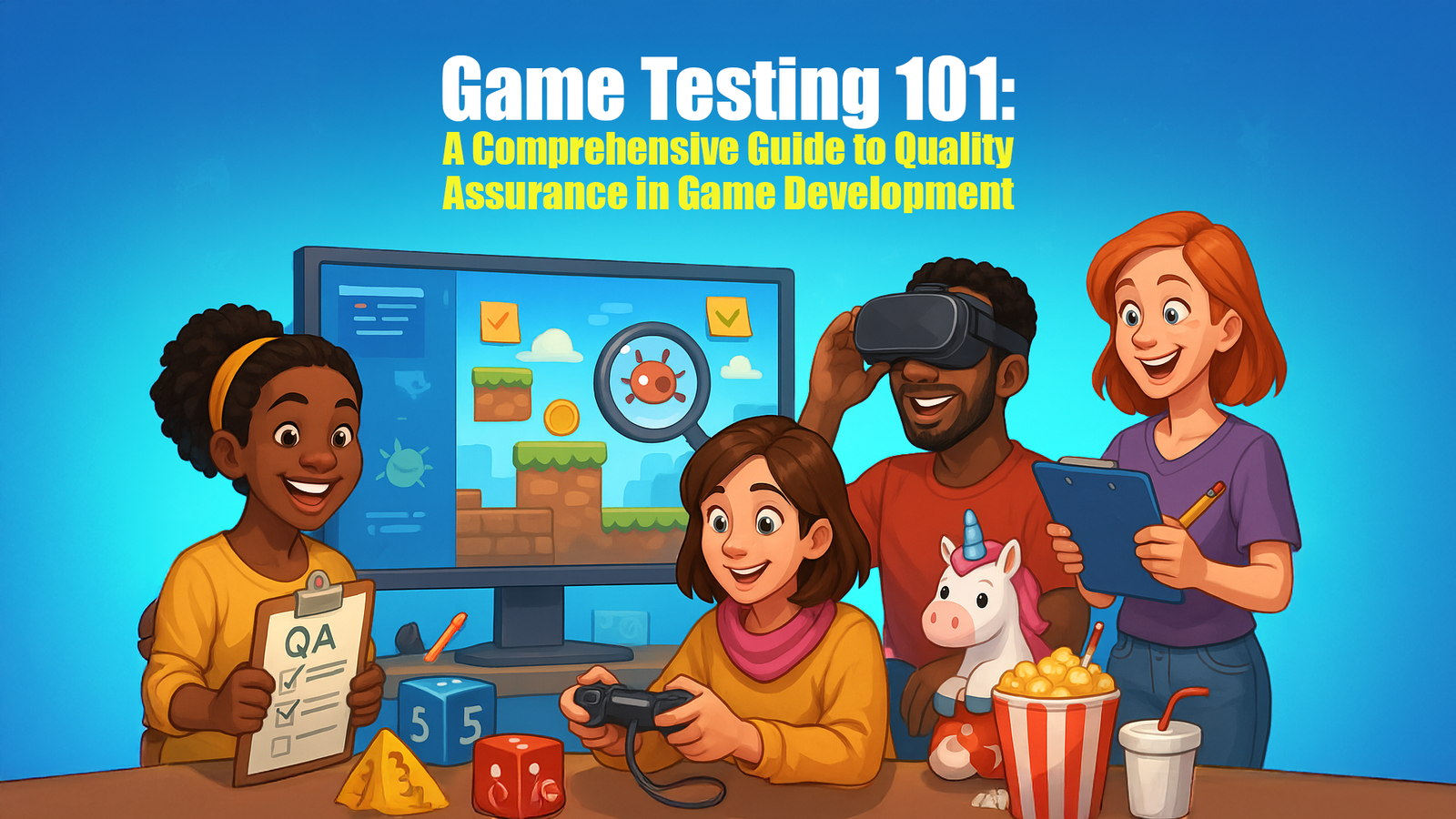Developing Hyper Casual Games: A Step-by-Step Guide
Developing Hyper Casual Games: A Step-by-Step Guide
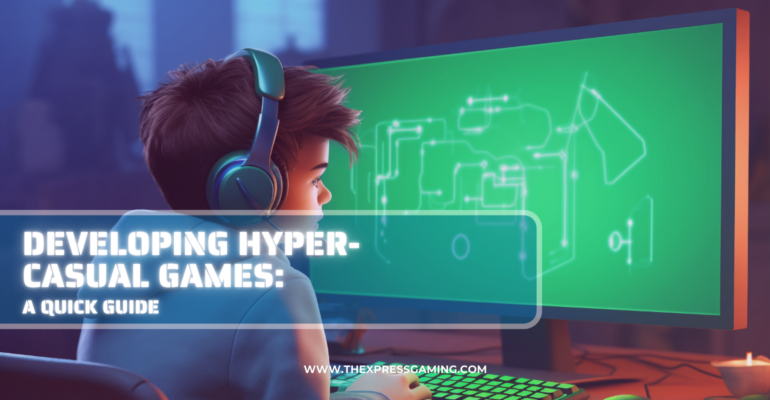
Contents
- 1 Getting the Scoop on Hyper Casual Games
- 2 Varieties of Hyper Casual Game Methods
- 3 Step-by-Step Process of Hyper-Casual Game Development
- 4 Accelerating Hyper-Casual Game Development with Xpress Gaming
- 5 Conclusion
Mobile gaming dominates the gaming market, generating 49% of total revenue—a clear sign of its massive appeal.
Hyper-casual games, like Candy Crush Saga and Helix Jump, captivate players with their simplicity and quick bursts of fun. Their “easy to learn, hard to master” design keeps players coming back for more, making them an incredible opportunity for developers aiming to create exciting games.
In this guide, we will discuss the essential steps of developing hyper-casual games and cover all the must-knows, from designs and gameplay to marketing and monetization strategies.
Getting the Scoop on Hyper Casual Games
Hyper-casual games are a popular genre of mobile games. They’re really straightforward, easy to play, and best for short sessions. Each game revolves around just one simple concept, which makes it a total blast for all sorts of gamers.
Here are some key characteristics of the hyper-casual game.
Simplicity and Accessibility
- Simple Design: Hyper-casual games go for the less-is-more approach, sticking to one smooth, no-fuss concept.
- Jump Straight In: You get the hang of the main game action in no time. And that means they can skip over the long-winded tutorials.
- Engaging Mechanics: With just the right blend of simple and tough, these games reel you back in, urging you to top your last high score.
Instant Fun and High Download Rates
- Easy Wins and Perks: Hyper-casual games give out quick rewards, making players feel good about their actions.
- Quick Sessions: With fast, repetitive, and straightforward objectives to achieve, the hyper-casual gameplay style fits perfectly into the busy schedules of players of all ages.
- Viral Potential: Thanks to easy-to-learn, immersive gameplay, these games spread through word of mouth and viral ad campaigns, skyrocketing in growth and fame.
Grasping these key concepts allows developers to whip up hyper-casual games that resonate with many players and dominate the gaming market.
Now that we’ve covered the defining features of hyper-casual games let’s explore the mechanics commonly used in them.
Varieties of Hyper Casual Game Methods
When you make a hyper-casual game, picking the right mechanics is key to success in this industry. The mechanics must be simple but tough enough to hold gamers’ interest.
Here are some of the most common hyper-casual game mechanics:
- Puzzle Mechanics
These games focus on simple puzzles that are easy to start but challenging enough to keep you hooked. They’re perfect for a quick mental workout, offering just the right balance of difficulty to keep players coming back.
Some examples of puzzle mechanics are:
- Roller Splat – Roller Splat involves a swipe to move a ball and cover the entire grid with paint. Its simple mechanics demand precision and strategy to complete each level.
- 2048 – Merge numbered tiles by sliding them to reach the elusive 2048. The game’s simplicity hides its addictive challenge, perfect for puzzle lovers.
- Agility or Dexterity Mechanics
These games test your reflexes and hand-eye coordination, requiring quick and precise movements. The key to success is balancing speed and accuracy.
Some examples of dexterity mechanics are:
- Flappy Bird – Guide a tiny bird through endless pipes by tapping the screen to keep it in the air. The game is challenging yet addictive, testing your timing and patience.
- Going Balls! – Roll a ball through tricky paths and obstacles, pushing your precision and focus. Its fast-paced gameplay keeps you on your toes and makes it hard to put down.
- Merge Mechanics
These games revolve around the satisfying act of combining similar items to upgrade or unlock new elements. The joy comes from making strategic decisions to optimize merging and experiencing growth and accomplishment.
- Merge Town – The game is all about combining similar houses to create bigger ones and expand your town. It’s a fun and simple game that keeps players hooked with steady progress.
- Merge Villa – In Merge Villa, the player needs to match and merge items to renovate a villa and unlock new areas. The game combines creativity with rewarding upgrades to keep players engaged.
- Resizing Mechanics
Players must resize their avatars in these games to fit through various obstacles. The challenge lies in growing or shrinking the character to pass through gaps and hurdles, creating a fun and unique gameplay experience.
- Jelly Shift – The gameplay involves stretching and shrinking a jelly figure to fit through different shapes, offering a fast-paced and satisfying experience.
- High Heels! – In high heels, the player collects heels to grow taller, overcome obstacles, and strut your way to victory in this quirky and fun challenge.
Remember, the key to a successful hyper-casual game is simplicity. By focusing on a single, intuitive mechanic, developers can create games that are easy to learn but difficult to master.
Now that we’ve explored the familiar mechanics in hyper-casual games, let’s move on to the Step-by-step process for your development.
Step-by-Step Process of Hyper-Casual Game Development
Let’s break down the process of creating a successful hyper-casual game, from concept ideation to global launch.
Step 1: Idea Generation and Prototyping
The very first step to creating a hyper-casual game is to think of simple, entertaining, and addictive game ideas. Ideas should be easy to understand and play but simultaneously challenging to keep the players interested in the game. Let’s dig deeper into the creation process of a hyper-casual game.
1. Selecting Game Engine: Choices and Realism
A suitable game engine has to be selected at the initial development step of the game. A game engine is a powerful software with many frameworks that facilitates game development through tools and features. The most popular choices and considerations include the following:
Unity: A versatile game engine suitable for both 2D and 3D games. Its interface is very friendly and offers an excellent asset store.
Unreal Engine: High-end, graphics-realistic engine, potent tool. AAA titles.
Godot: Free and open-source; popularity is growing, especially because it’s flexible and high-performance.
When choosing the engine, your team’s skills, game complexity, and platform target will matter.
2. Procuring Game Assets: Buy and Reuse Techniques
Game assets like 3D models, textures, sound effects, and music constitute the blocks for your game. You can get these in different ways:
Buy: Use online stores like the Unity Asset Store or Unreal Engine Marketplace to purchase premium assets.
Create: If you have the skills, create your assets using 3D modeling software, image editing tools, and audio production software.
Reuse: Reuse existing assets from previous projects or find free resources online.
Where acquiring assets is concerned, it’s always quality rather than quantity. Invest in those assets that fit within the art style of your game and your gameplay mechanics.
3. Gameplay First: Engaging Mechanics Over Themes
A good game theme is captivating, but it’s not enough to make the game great; the real essence lies in its game mechanics. Engaging and challenging mechanics are what keep players hooked and coming back for more.
Core Loop: Define the main cycle of action that players would repeat.
Progression: Players experience satisfying progression and rewarding effort.
Challenges: Design different types of challenges to keep the player engaged.
Remember, a good foundation in gameplay will make your game more fun regardless of its theme.
4. Prototyping: Rapid Testing and Iteration
Prototyping is an important step in game development. It refers to the creation of simplified versions of your game to test core concepts and gather feedback.
Here are some benefits of prototyping.
- Early Feedback: Identify issues and areas for improvement early on.
- Iterative Development: Refine your game’s design through multiple iterations.
- Risk Mitigation: Minimize the risk of investing significant time and resources into a flawed concept.
With these basics, let’s shift our focus to the development process.
Step 2: Game Development
Once you have a solid concept and prototype, it’s time to dive into the full-scale development of your game. This involves several key steps:
- Level Design: Create engaging levels that gradually increase in difficulty, ensuring a smooth and enjoyable player experience.
- Game Engine Selection: Choose a suitable game engine, such as Unity or Godot, which provides the tools and frameworks to build your game.
- Asset Creation: Develop or acquire necessary assets, including characters, backgrounds, sound effects, and music.
- Programming: Implement the game’s logic, user interface, and input controls using a programming language like C#.
Xpress Gaming’s dedicated team of experienced professionals is committed to providing innovative tools and services to streamline the development process.
As we near the latter half of the development process, let’s test & get the game ever so close to launch.
Step 3: Testing and Launching Your Game
Once you have developed your hyper-casual game, it is time to test and launch it. This is a critical step in ensuring that the game performs well and is well-received by your target audience. Let’s see how to test and launch your game effectively.
Phase 1: Thorough Testing and Optimisation
It is now time to perfect your game with thorough testing. This includes:
- Performance Testing: Ensure that the game runs smoothly on different devices and operating systems.
- User Experience Testing: Assess the overall player experience, including controls, UI, and tutorial clarity.
- Bug Fixing: Identify and eliminate any bugs or glitches that may hinder gameplay.
- Game System Optimization: Fine-tune game mechanics, level design, and progression systems to create a balanced and engaging experience.
By prioritizing testing and optimization, you can deliver a high-quality game that captivates your target audience.
Phase 2: Soft Launch: A Strategic Approach
A soft launch is a key step in game development. It allows you to release your game in specific regions at a low cost. This approach helps gather valuable feedback without risking a major setback. You can find and fix bugs early and learn what keeps players engaged. It’s also a great time to adjust and improve the gameplay to make the game better.
After completing the process of testing and soft launch, let’s move on to the next step, which is the monetization of hyper-casual games.
Step 4: Monetization Strategies for Hyper-Casual Games
Hyper-casual games primarily rely on advertising to generate revenue. Unlike casual and other game genres, they don’t offer in-app purchases. Instead, they focus mainly on advertising as their primary source of income. Let’s explore the most common monetization strategies:
1. In-App Advertising
In-app advertising is a straightforward way to generate revenue. It involves displaying ads directly within the game. There are three main types of in-app ads:
- Banner Ads: These are small, non-intrusive ads displayed at the top or bottom of the screen.
- Interstitial Ads: Full-screen ads that appear between levels or game sessions.
- Rewarded Video Ads: Users watch a video ad to earn in-game rewards.
2. Using Ad Networks
Ad networks make it easier to manage and optimize ad placements. With ad networks such as AdMob, Unity Ads, and AppLovin, you can
- Maximize Revenue: Ad networks employ sophisticated algorithms to optimize ad placements and pricing.
- A/B Test: Try out different ad formats, placements, and frequencies to find the optimal configuration.
- Monitor Performance: Track key metrics to improve your ad strategy.
3. Rewarded Video Ads: A Win-Win Strategy
Rewarded video ads are a win-win for developers and players. Rewarding viewers with valuable rewards for watching ads can:
- Increase Player Engagement: Incentivize players to watch ads.
- Strategic Placement: Placing ads strategically at points within the game
- Reward Design: The reward should be attractive enough to ensure maximum ad views
Using these monetization strategies effectively will ensure that your hyper-casual game sustains revenue in the long term.
Let’s discuss how to increase your game’s visibility through cross-promotion and player engagement strategies.
Step 5: Cross-promotion and Player Engagement
To succeed in the hyper-casual game market, developers must maintain player engagement and promote their games effectively. In this section, we’ll discuss some essential cross-promotion strategies and ways to keep players coming back.
Cross-Promotion: Expanding Your Reach
Cross-promotion can be a pretty powerful strategy by leveraging your already existing player base and getting them to check out your other games. By interweaving soft promotions into your games, you can lead users to your other titles in a more organic way. This will have the following results:
- Boosts Player Retention: Keeps playing within your ecosystem.
- Drives User Acquisition: Brings in new users into your other games.
- Maximize Marketing ROI: Leverage your existing users.
Maintain Player Engagement: The Key to Long-Term Success
Create the following strategies to ensure constant engagement from your audience over time.
- Continual Updates: Continuously keep uploading new content, like levels, challenges, or features.
- Time-Sensitive Events: Use time-bound events to create an element of urgency and excitement.
- Rewards and Incentives: Incentivize players through rewards in the game.
- Social Features: Create a sense of community through leaderboards, social sharing, and multiplayer.
- Data-Driven Optimization: Optimize updates based on data collected that identifies improvement areas.
Focusing on player engagement can ensure the longevity of your hyper-casual games and cultivate a loyal player base.
Now your game is set for Full Launch.
Step 6: Full Launch and Beyond
Once your game is ready, it’s time to launch and market it effectively. Optimize your app’s visibility on app stores through ASO, leverage social media and influencer marketing to generate buzz, and consider paid advertising campaigns to reach a wider audience. After launch, maintain player engagement by releasing regular updates, actively engaging with the community, and using data analytics to make informed decisions.
With these steps and staying up to date with the latest trends in hyper-casual game development, you can develop games that appeal to millions of players.
Keeping all these in mind, let us see how Xpress gaming is a hassle-free, hyper-casual game development experience.
Accelerating Hyper-Casual Game Development with Xpress Gaming
At Xpress Gaming, our team of experts streamline the development and publishing process for hyper-casual games. With over 150 gaming projects for clients all across the globe, we offer a range of tools and services that help streamline the end-to-end cycle of game production. Here’s how Xpress Gaming can help:
- Rapid Prototyping: Xpress Gaming offers tools and utilities that enable the speedy creation and testing of prototypes through the rapid prototyping tool. This feature enables developers to iterate rapidly and spot problems fast.
- Engine Integration: Xpress Gaming integrates with various game engines, which include Unity, GameMaker Studio, and Unity, allowing users to use these existing skills or workflows.
- Monetization Support: They provide tools and insights for optimizing your monetization strategy in the game, including the integration of ads and in-app purchases.
- Analytics and Insights: Xpress Gaming provides analytics data that is valuable for understanding the behavior of a player, tracking key metrics, and making data-informed decisions to improve your game.
Using the features and services of Xpress Gaming, developers will be able to reduce the time and effort needed to develop, test, and launch hyper-casual games, thus increasing their productivity and success.
We can now conclude our guide to hyper-casual game development.
Conclusion
Hyper-casual game development can be an exciting and rewarding endeavor, especially as the market for these simple, engaging games continues to grow. By following the steps from designing simple yet addictive mechanics to selecting the right game engine, launching, testing, and implementing cross-promotion strategies, you’ll be on the path to creating successful games that captivate players and generate revenue.
Tired of the complexities of hyper-casual game development?
Xpress Gaming is here to simplify your journey.
Client Testimonials Blog ID - 15610
At Kuriosity QA, we are committed to providing the highest quality gaming QA services to our clients in the gaming industry. Here’s what some of our satisfied clients have to say about working with us:
